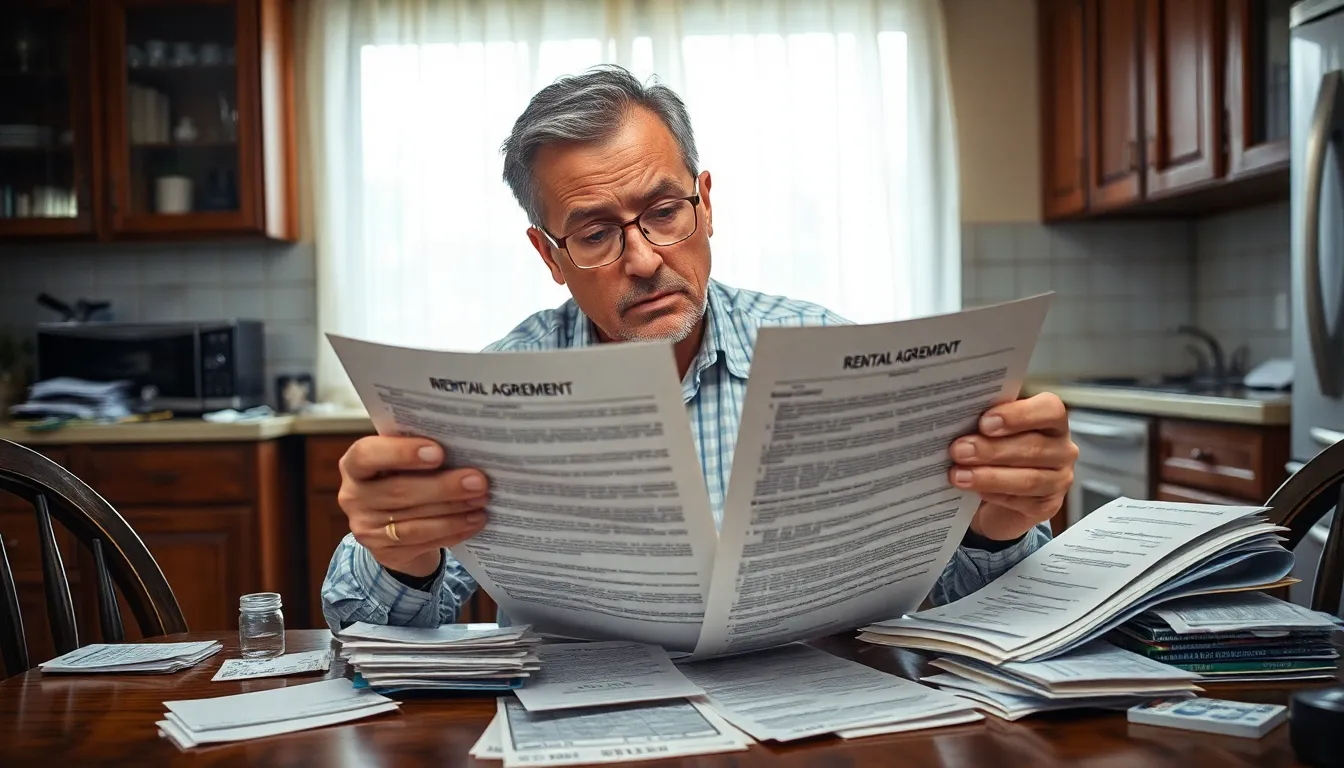Tenant turnover can feel like a revolving door, swinging wildly as residents come and go. For landlords and property managers, this constant shuffle isn’t just a headache; it’s a costly affair. Every time a tenant moves out, there’s the expense of cleaning, repairs, and the dreaded vacancy period where no rent comes in. It’s enough to make anyone wish for a magic wand to keep those tenants happily settled.
But fear not! Reducing tenant turnover doesn’t require a crystal ball or a secret potion. With a few strategic tweaks and a sprinkle of charm, property owners can create an environment that tenants love to call home. By focusing on communication, amenities, and a sense of community, it’s possible to turn that revolving door into a sturdy front door that stays shut. Let’s explore how to make tenant retention not just a goal but a reality.
Table of Contents
ToggleUnderstanding Tenant Turnover Reduction
Tenant turnover refers to the process of tenants vacating their rental units and the subsequent need for property owners to find new occupants. High tenant turnover creates financial strain, causing increased operational costs related to cleaning, repairs, and lost rent during vacancies.
Definition of Tenant Turnover
Tenant turnover occurs when a lease expires or when a tenant chooses to leave before the lease’s end. It directly affects property managers and landlords as new tenants must be sourced and screened. Property owners track turnover rates to manage finances effectively. Higher turnover rates may signify dissatisfaction with the property or management.
Importance of Reducing Turnover
Reducing turnover holds significance for maintaining steady income streams and minimizing costs. When tenants remain longer, property owners save on vacancy-related expenses and decrease the likelihood of encountering unexpected repairs. Longer occupancy periods also enhance tenant satisfaction, fostering a stronger community atmosphere. Additionally, engaged tenants are more likely to renew leases, promoting stability within housing markets.
Common Causes of Tenant Turnover

Understanding the common causes of tenant turnover helps landlords and property managers address specific issues effectively. Several factors contribute to high turnover rates in rental properties.
Financial Factors
Rent increases often lead tenants to seek more affordable housing options. Sudden changes in utility costs, such as heating and cooling fees, can strain budgets significantly. In some cases, high maintenance fees create discontent among tenants. Economic downturns or job loss may also prompt individuals to move into more cost-effective living situations. Property owners must maintain transparency regarding financial changes to mitigate dissatisfaction.
Personal Reasons
Life events frequently influence tenant decisions to move. Job relocations can require tenants to leave an area unexpectedly. Family-related changes, such as marriage or divorce, often necessitate different living arrangements. Some tenants seek larger spaces due to growing families, while others prefer downsizing after children leave home. Individual circumstances shape rental needs, urging property owners to remain adaptable in meeting tenant requirements.
Property Management Issues
Insufficient communication from property management can frustrate tenants. Delayed responses to maintenance requests often lead to dissatisfaction and potential moves. An uninviting atmosphere or lack of community events may contribute to tenants feeling disconnected from their neighbors. Poor upkeep of property amenities can affect tenant retention, as residents expect well-maintained facilities. Establishing effective management practices strengthens tenant relationships and promotes longer occupancy durations.
Strategies for Tenant Turnover Reduction
Reducing tenant turnover requires practical strategies. Landlords can implement several effective measures to improve tenant retention.
Enhancing Tenant Communication
Effective communication plays a vital role in tenant satisfaction. Regular check-ins via emails or phone calls can help property managers gauge tenant needs. Open lines of communication decrease the chances of misunderstandings. Listening to tenant concerns often leads to quicker resolutions. Providing timely updates about property changes can foster trust. Additionally, a social media presence can engage residents and create a sense of community.
Offering Competitive Lease Terms
Competitive lease terms appeal to potential tenants. Flexible lease options attract diverse tenant demographics. Offering longer leases can provide stability for both parties. Rent rates should align with similar properties in the area to remain attractive. Incentives like rent discounts for early renewals can encourage lease extensions. Landlords may also consider including utilities or maintenance in rent to enhance value.
Improving Property Maintenance
Property maintenance significantly impacts tenant retention. Timely responses to maintenance requests create a positive living environment. Regular property inspections can preemptively identify issues before they worsen. Investing in quality repairs boosts tenant satisfaction and reduces complaints. Landscaping and common area upkeep often contribute to a more appealing property. Overall, proactive maintenance enhances overall tenant experience and fosters loyalty.
Benefits of Reducing Tenant Turnover
Reducing tenant turnover offers significant advantages for property owners. By focusing on retention, landlords experience enhanced financial outcomes and a stronger community.
Cost Savings
Cost savings constitute a primary benefit of reducing tenant turnover. Lower vacancy rates translate directly into consistent rental income. Property owners save on expenses associated with cleaning, repairs, and advertising new listings. Additionally, minimizing tenant turnover decreases the time spent on screening and onboarding new tenants, which often requires hiring third-party services. Significant financial strain lessens when fewer resources go toward turnover-related costs. For instance, the National Multifamily Housing Council notes that turnover can cost property owners 30% of a tenant’s annual rent. Property owners reap the benefits of a well-stabilized property, ensuring a more profitable investment.
Stable Community Environment
A stable community environment emerges when tenant turnover decreases. Residents who feel secure and engaged contribute to long-term relationships with neighbors. Longevity in tenancy fosters connections among residents, creating a sense of belonging. In turn, this sense of community enhances tenant satisfaction, encouraging lease renewals and stability. Regular tenants participate in opportunities that promote collaboration and shared experiences, ultimately leading to a harmonious living environment. Research indicates that satisfied tenants are more inclined to recommend properties to others, highlighting the importance of community cohesion. A thriving community not only retains existing tenants but also attracts new ones who seek a friendly atmosphere.
Reducing tenant turnover is essential for property owners looking to maintain financial stability and a thriving community. By prioritizing tenant satisfaction through effective communication and well-maintained properties, landlords can foster long-term relationships. These relationships not only enhance tenant loyalty but also create an inviting atmosphere that attracts new residents.
Implementing strategic improvements can lead to significant cost savings and a more consistent income stream. Ultimately, a focus on tenant retention transforms rental properties into homes, benefiting both landlords and tenants alike.





